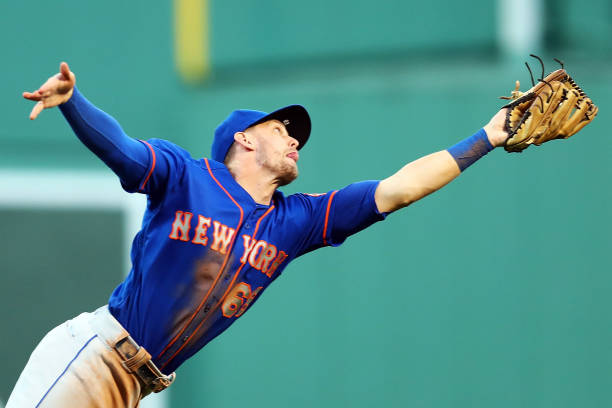
Note: If unsure about any stats used in this article, please check the key.
Last Season: Mickey Callaway held the position as the Indians pitching coach for five years before managing the New York Mets in 2018. In 2017 alone, the Indians had a league-best 3.30 ERA, 10.1 K/9, and 31.7 combined fWAR. Also, Corey Kluber won two Cy Young awards (2014 and 2017) during his tenure. Callaway’s success with the pitching rotation translated to the New York Mets’ staff. If the Mets were defined by one storyline in 2018, it would be Jacob deGrom. Despite “only” winning 10 games, as well as having little run support from his team, deGrom won the Cy Young award in 2018. He won the award based on a 1.70 ERA (second-lowest ERA since the mounds were lowered in 1969), 1.99 FIP, 11.6 K/9, and a 9.0 fWAR.
Unfortunately for the Mets, deGrom was not able to single-handedly carry them to the postseason. The team from Queens finished fourth in the NL East with a record of 77-85. After an incredible, 11-1 record start, the Mets went 10-18 in May, and 5-21 in June. Those two months alone were the difference in not making the playoffs for the third time in the last four years. The Mets received little aid from their star player, Yoenis Cespedes. Cespedes, who carried the Mets to the postseason from 2015-16, looked like a truly injury-prone player. In 2017, he was derailed from several hamstring strains, while in 2018 his year came to an abrupt end from Twin Heel Calcification. The Mets had another head-scratching injury when Noah Syndergaard was placed on the D.L. (now called the I.L.) with hand, foot, and mouth disease. Furthermore, Todd Frazier, who they signed to a 2/$17m deal struggled for the Mets. His OPS (.752 to .698), ISO (.212 to .176), BB% (14.4 to 10.2), and fWAR (3.1 to 1.5) all took a turn for the worst.
However, the biggest flaw for New York was their bullpen. Pitchers such as AJ Ramos (47/52 in SVO before coming to New York, 6.41 ERA, 5.19 FIP, -0.2 fWAR in 2018), Anthony Swarzak (6.15 ERA, 5.48 FIP, 2.05 HR/9, -0.4 fWAR), Hansel Robles (5.03 ERA, .280 BAA, 1.58 WHIP), Jerry Blevins (4.85 ERA, 4.97 FIP. 4.64 BB/9, -0.1 fWAR), and Paul Sewald (6.07 ERA, 4.23 FIP, 3.67 BB/9, 0.1 fWAR) all struggled greatly for the Mets.
Despite these shortcomings, the Mets had a lot of bright spots. The Mets’ rotation rounded out nicely after deGrom; Zack Wheeler had the lowest ERA (1.04 ERA) in baseball after the All-Star break, Syndergaard kept the Mets in contention as late as mid-September thanks to a couple of complete-game victories, and Steven Matz continued to pitch like a solid 4-5 starter. Meanwhile, Seth Lugo (2.66 ERA 3.17 FIP, 9.15 K/9, 1.5 fWAR), Jeff McNeil (5.6 BB%, 9.7 K%, .329/..381/.471, and 2.7 fWAR in 63 games) and Brandon Nimmo (.263/.404/.483, .219 ISO, 4.5 fWAR) broke out. Besides, the Mets showed life in the second half. Players such as Michael Conforto (11 HRs to 17 HRs, .216/.344/.366 to .273/.356/.539), and Amed Rosario (LD%: 17.6% to 24.3%. IFFB%: 15.4% to 5.9%) helped the Mets play seven games over .500 after the All-Star break. Lastly, although the Mets failed to reach the playoffs for a second consecutive year, at least they got to see their captain, David Wright, take the field one last time in a Mets uniform after being injured for the last several years.
Transactions: In 2018 offseason, one of the Mets’ biggest moves was signing Brody Van Wagenen to be their next General Manager. Many baseball fans were unsure if the Mets would be buyers or sellers at the deadline. Van Wagenen believed the Mets still had a title run in their bones and spent the offseason trying to patch holes in much-needed areas of improvement. As a result, Van Wagenen decided to shore up the bullpen. He shocked the baseball world by acquiring 2B Robinson Canó (.303/.374/.471, 10 HRs, 135 wRC+, 2.9 fWAR) and CL Edwin Díaz (MLB-leading 57 saves, 1.96 ERA, 1.61 FIP, 3.5 fWAR) from the Mariners, and giving up two of their top five prospects in Justin Dunn and Jarred Kelenic. Van Wagenen also brought back Jeurys Familia (3.13 ERA, 2.65 FIP. 10.38 K/9, 0.38 HR/9 in 2018), as well as adding Justin Wilson (3.46 ERA, 3.64 FIP, 11.36 K/9, 0.82 HR/9 in 2018) and Luis Avilán (3.77 ERA, 3.04 FIP, 10.13 K/9, 0.60 HR/9 in 2018) to the ‘pen. However, the biggest move for Van Wagenen was bringing up Pete Alonso a month early. The Mets could have had Alonso under team control for an entire year if they kept him in the minors for an extra month, but Van Wagenen thought Alonso was the best option. And he was the best option. Alonso is now one of the best first basemen in baseball (.267/.367/.591, 45 HRs, 107 RBIs, .324 ISO, 4.4 fWAR), and has a shot at winning the ROY award unanimously.
Other key acquisitions include Jed Lowrie, Marcus Stroman, Wilson Ramos, and J.D. Davis right before the trade deadline. Lowrie’s signing was surprising because the Mets already had Canó as a second baseman, and McNeil right behind him. Interestingly enough, McNeil was the healthiest and most productive of the three (.324/.392/.526, 18 HRs, .202 ISO, 3.9 fWAR), while mostly playing RF for New York. Also, acquiring Marcus Stroman shocked the baseball world as many baseball fans thought the Mets would sell Syndergaard, Wheeler, and/or Vargas (who they eventually did trade to the Phillies). Instead, they traded for one of the best pitchers in the American League in Marcus Stroman (124.1 IP, 2.89 ERA, 1.23 WHIP) to keep their playoff hopes alive. Surprisingly, the best acquisition of the quartet is J.D. Davis. Davis, who originally came from the Houston Astros’ system, was blocked by Alex Bregman, Michael Brantley, and lower than top prospect Kyle Tucker on the depth chart. As a result, Davis had no real opportunity with the Astros, so the Mets gladly scooped him up. In short, Davis has raked for the Mets (.307/.371/.519, 18 HRs, .212 ISO, and 2.1 fWAR). Although in terms of offensive performance, Ramos is not too far behind Davis; he’s still one of the best hitting catchers in the Majors (.298//.360/.434, 14 HRs, 111 wRC+, 1.5 fWAR).
Besides the major signings, the Mets brought in a wide variety of veterans, hoping that one would stick. The Mets signed brand named players such as Rajai Davis, Joe Panik, Adeiny Hechavarria, Matt Kemp, and Keon Broxton. These players have their fair share of hardware: Hechavarria and Panik won gold gloves, Broxton and Davis had 30+ steal seasons, and Kemp was second in MVP in 2011 In fact, the one veteran they did release was Travis d’Arnaud. d’Arnaud had a tough time throwing out runners (22.5 CS%), and a slightly below league offensive bat (career 97 wRC+) in his career, broke out when the Rays acquired him. In 80 games, he has 16 HRs (47 HRs in his career before then), 59 RBIs, and about a 1.6 fWAR. So, while Van Wagenen should be applauded for his efforts on taking a flyer on former All-Star players, none of these veteran acquisitions (or releases) have helped out the Mets.
Title Hopes: The Mets have a sneaky good offense. Jeff McNeil and Pete Alonso are one of the best 1-2 punches in baseball. Amed Rosario (.286/.322/.428, 24 SB, .316 wOBA, 2.0 fWAR), and Michael Conforto (.259/.359/.496, career-high 29 HRs, .237 ISO, 2.9 fWAR) continue to improve. Furthermore, Todd Frazier (.233/.309/.416, 18 HRs, .183 ISO), Robinson Canó (.256/.303/.435, 12 HRs, .176 ISO), and Wilson Ramos all bring postseason bats to the lineup.
Although deGrom does not live up to last year’s remarkable season, he still has a legitimate shot at the Cy Young award (176.0 IP, 2.76 ERA, 2.86 FIP, 11.25 K/9, 5.2 fWAR). The rotation after deGrom is still one of the best in the National League. Noah Syndergaard (2.80 ERA, .221/.265/.350, .258 wOBA post-All Star break), Zack Wheeler (4.33 ERA, 3.68 FIP, 8.82 K/9, 3.6 fWAR), and Steven Matz (2.11 ERA, .228/.292/.357, .279 wOBA at Home) round out the rotation nicely. Even though the bullpen is still the biggest flaw for the Mets, Seth Lugo (2.87 ERA, 2.88 FIP, 11.35 K/9, 1.8 fWAR), Luis Avilán (1.04 ERA, .172/.284/.224, .239 wOBA), and Justin Wilson (2.48 ERA, 3.98 FIP, 9.92 K/9, 50.0 GB%) all remain viable options in the bullpen. Lastly, the Mets have a lot of life in their team. After going 40-50, and being seemingly out of contention before the break, they have gone 32-20 during the second half. Another hot steak can quite possibly catapult them to a second Wild Card finish.
Tragic Flaws: As previously mentioned, the biggest flaw for the Mets is their bullpen. Edwin Díaz (5.77 ERA, 4.57 FIP, 15.45 K/9, 3.40 BB/9, 0.0 fWAR), and Jeruys Familia (6.18 ERA, 5.10 FIP, 10.06 K/9, -0.3 fWAR) have struggled greatly in the back of the bullpen. There’s also no urgency to deploy the two in different situations, partly because of stubbornness from management, and the fact that Seth Lugo and Justin Wilson are not suitable closers or setup men.
Despite the Mets having a starting rotation that’s better than a good portion of National League contenders (Milwaukee Brewers, Chicago Cubs, Atlanta Braves, Philadelphia Phillies, St. Louis Cardinals and Arizona Diamondbacks), the Mets still trail behind the Los Angeles Dodgers and Washington Nationals in starting pitching. The Dodgers and Nationals have three pitchers a piece that are probable top-ten Cy Young candidates. The Dodgers have Hyun-Jin Ryu, Clayton Kershaw, and Walker Buehler, whereas the Nationals have Max Scherzer, Stephen Strasburg, and Patrick Corbin. That being said, the Mets have a top-10 Cy Young award candidate in deGrom, but Syndergaard and Wheeler will not fall into that category this season; Although Syndergaard Wheeler, and even Stroman (if he can find his groove again) do have the ceiling of an ace, they are not on par with these rotations. If the Mets made the playoffs and won the Wild Card game, can their rotation and their bullpen handle the Dodgers’ bats? Or even if the Mets made the World Series, could they withstand slugging AL contenders such as the New York Yankees, Minnesota Twins, Houston Astros, Oakland Athletics, or Cleveland Indians? It’s unlikely, to say the least.
To add insult to injury, the Mets offense is certainly top-heavy as McNeil, Alonso, Conforto, Davis, and Ramos are a fearsome quintet. However, Frazier, Canó, and Rosario are essentially league average hitters this year. Perhaps Lowrie’s return, or Joe Panik’s glove and contact skills can push Canó to the bench, but it’s unlikely that either would be that much of an upgrade. Another area of concern is the Mets’ defense. All across the diamond, the Mets struggle. McNeil is the only Met to play this year with a positive DRS or UZR. Although J.D. Davis (OF: -6 DRS, -8.4 UZR/150. 3B: -10 DRS, -5.3 UZR/150), and Wilson Ramos (-12 DRS, -7.9 FRM) are among the worst of the defenders, Conforto, Canó, Lagares, Alonso and Nimmo all are right behind them. At least, Alonso and Lagares pass the eye test in terms of their defensive abilities. It also doesn’t help that the Mets are awful with runners on base. They rank dead last in CS% (14.39%) with starters and relievers combined, third to last in CS% (15.91%) when their starters are pitching, and dead last with their relievers pitching (11.90 CS%).
Yet perhaps the most alarming issue is that the Mets are four games back of the second Wild Card with twenty games left to play. Currently, the Mets trail the Chicago Cubs, Arizona Diamondbacks, Milwaukee Brewers, and Phillies for the second Wild Card. The Mets will probably have to win at least fifteen of those games to have a decent chance at the Wild Card, and that’s only if the other Wild Card hopefuls don’t go on a hot streak. The rest of September will be a tough stretch for the Mets, yet they went on a tear to even put themselves in conversation about playoff contention, so it’s not too much of a stretch to make one final push.
Key:
ERA: Earned Run Average-the average number of runs a pitcher gives up in a nine-inning game. MLB average: 4.15 ERA
K/9: Strikeouts per 9 innings. MLB average: 7.7 K/9
fWAR: Wins Above Replacement from Fangraphs. For example, If a player has 0.1 fWAR they are worth 0.1 wins more than a replacement-level player (0.0 fWAR). During the halfway mark of a season, a starting player with 2.0 fWAR is an average starter.
AL: American League
NL: National League
Cy Young: The award for the best pitcher. There is a Cy Young award in the AL and NL.
FIP: Essentially an ERA that’s more focused on what the pitcher can control without solely relying on his defense (strikeouts, walks, homers, hit batters). MLB Average: 4.20 FIP
W-L: The numbers of wins versus the numbers of losses. Ex/ 11-1 means eleven wins and one loss.
x/ym= x: number of years, y:a number, m=millions. Ex/ 2/$17 is a two-year deal worth $17 million in total.
HBP=Hit by Pitch
BB=Walk
PA=Plate Appearance
AB=At bat
OBP=On Base Percentage. (H+BB+HBP/PA)
1B/2B/3B/HR=Single/Double/Triple/Home Run
SLG=Slugging percentage. (1B+2B*2+3B*3+HR*4/AB)
OPS: OBP+SLG. MLB average: .727 OPS
BB%: BB/PA. MLB average: 8.0%
ISO=Isolated power. (2B+3B*2+HR*3/AB)
SVO=Save opportunities
HR/9: Home runs allowed per 9 innings. MLB approximate average: 1.35 HR/9.
BB/9: Average number of walks around in a nine-inning game. MLB average: 2.9 BB/9
WHIP: Walks+Hits in Innings Pitched. MLB Average: 1.30 WHIP
K/9: Strikeouts per 9 innings. MLB average: 7.7 K/9
AVG(BA)/OBP/SLG: The triple-slash line of Batting Average (H/AB), OBP, and SLG. MLB average in 2018: .248/.318/.409.
1-5 starter: A starting rotation generally consists of five pitchers to go deep into ball games. 1 is the best starter, and 5 is the worst starter.
K%: Strikeouts/PA. MLB average: 20.0%
LD%: Line Drives/AB
IFFB: Infield Fly Ball/All Fly Balls
wRC+=Weighted runs created plus. A stat that quantifies total offensive value and factors in the different dimensions of each ballpark. A wRC+ of 100 is replacement level, and anything above that is X% above league average (i.e. a wRC+ of 101 is 1% above league average offensively).
RBI=Run Batted In
IP: Innings Pitched
CS%: Caught Stealing percentage; The percentage at which runners are thrown out trying to steal a base. MLB average: 26.32%
ROY: Rookie of the Year
wOBA: Weighted On Base Average. A more advanced version of OPS where that weighs the various possibilities of getting on base differently. MLB Average: .320
DRS: Defensive runs saved. A stat that has a number above 0 is above average, and a number below 0 is below average.
UZR/150: A defensive stat that has a number above 0 (replacement level) is considered above average. A stat where having a number above 0 is above average, and a number below 0 is below average.
Sources:
Related

Featured Articles
-
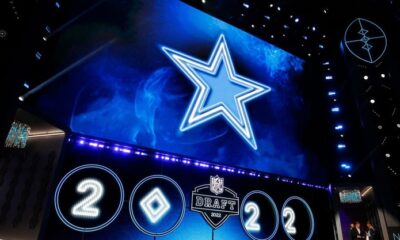

Features
/ 1 day agoWho should the Cowboys select in Round 1 of the 2024 NFL Draft?
This year’s 2024 draft is loaded with offensive tackle and wide receiver talent which...
-
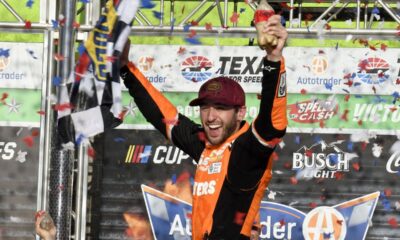

Features
/ 2 days agoA Texas Sized Victory for Chase Elliott
Here we go again, for the second time in four races, NASCAR is back...
By Jacob Barker -
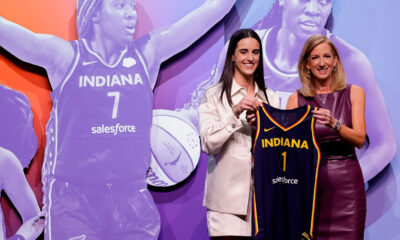

NCAA
/ 2 days agoTrinity’s 2024 Newsletter: 2024 WNBA Draft Recap
Outside of the assumption that Caitlin Clark would be picked first in the 2024...
By Trinity Rea -
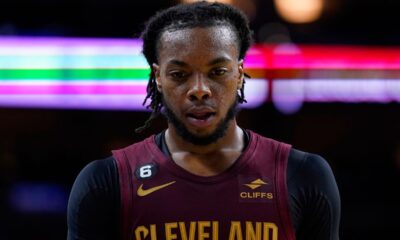

Features
/ 3 days agoThe Young Cavaliers: Darius Garland
Continuing a series looking at the contributions and growth of the Cleveland Cavalier’s young...
By Patrick Yen
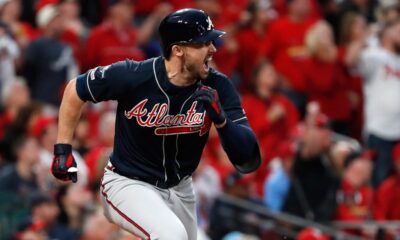

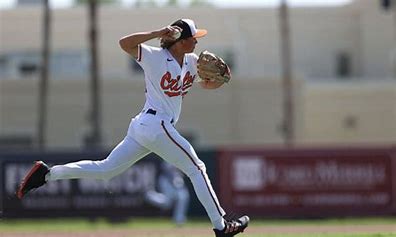

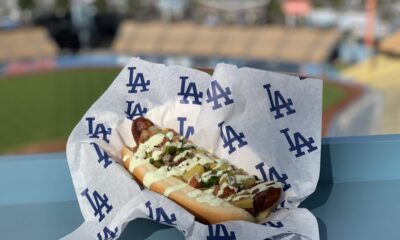

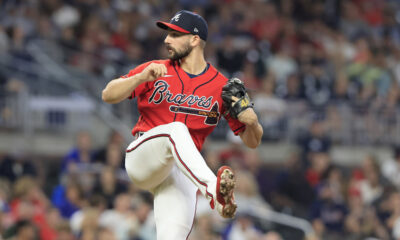





4 Comments